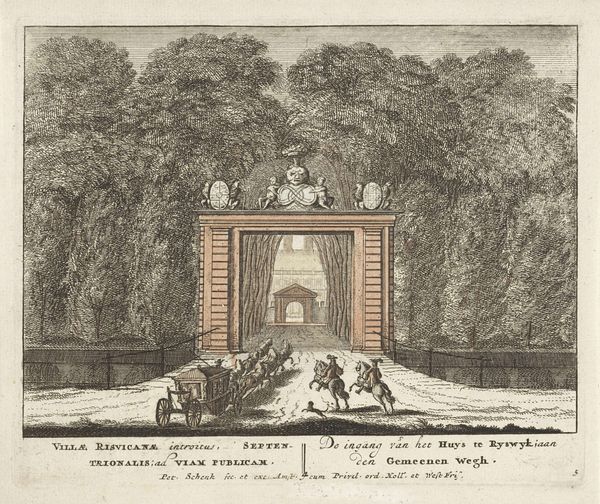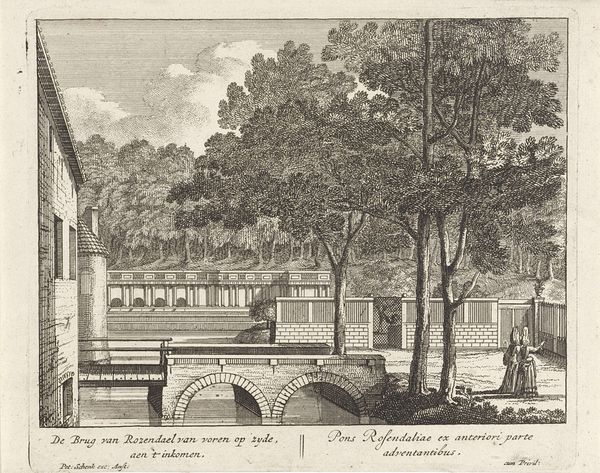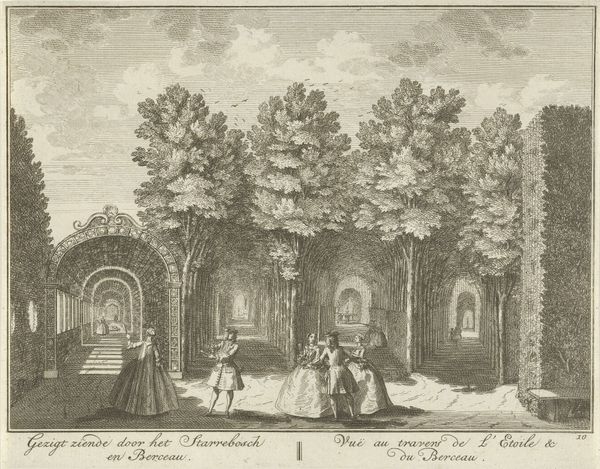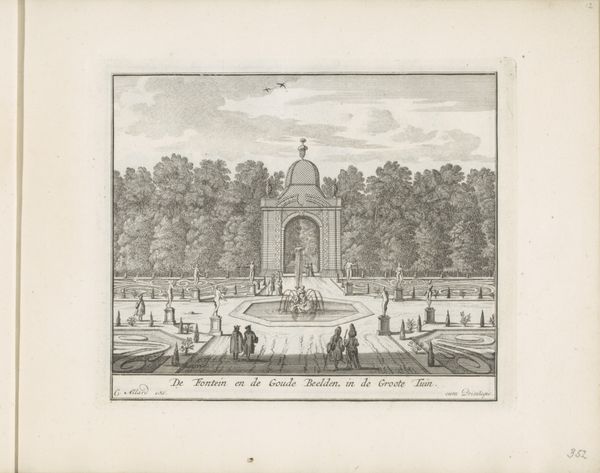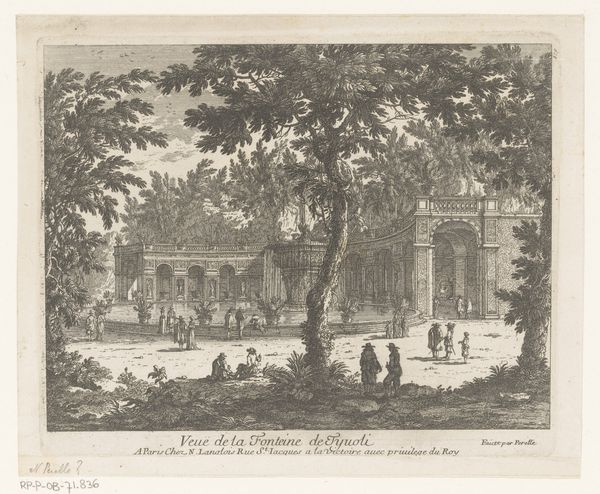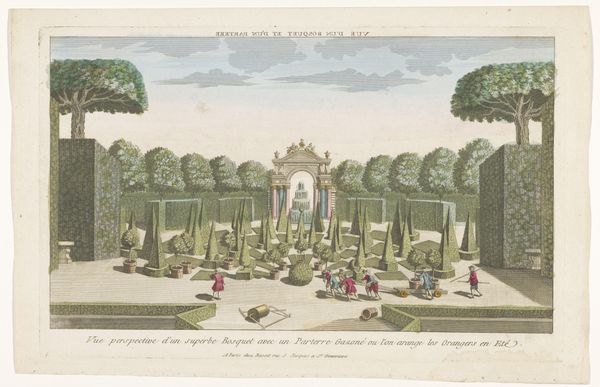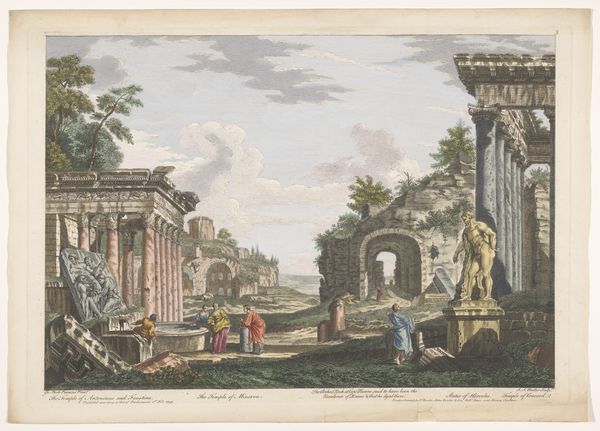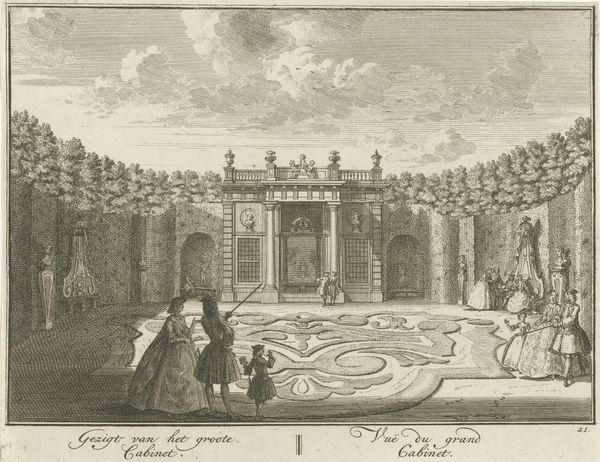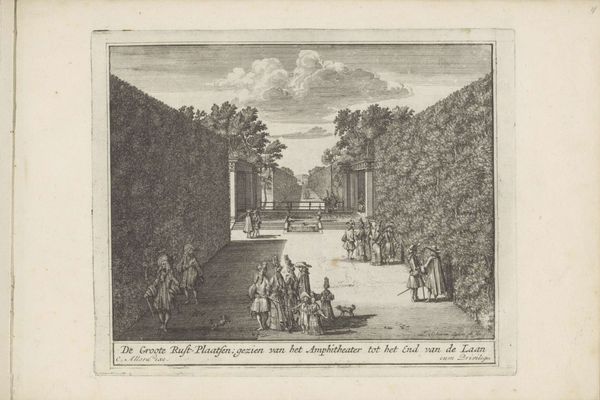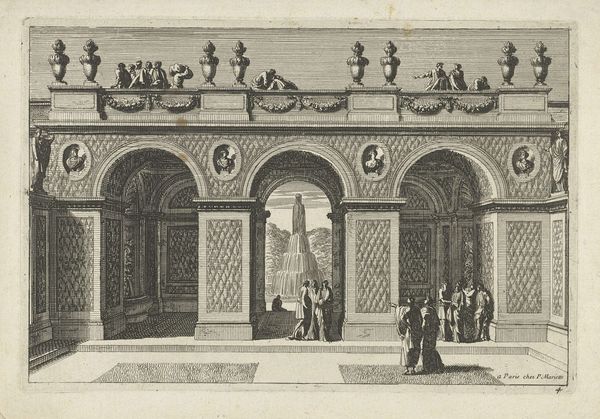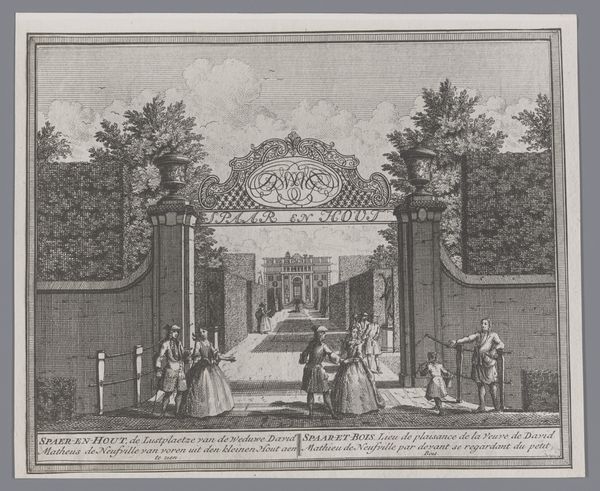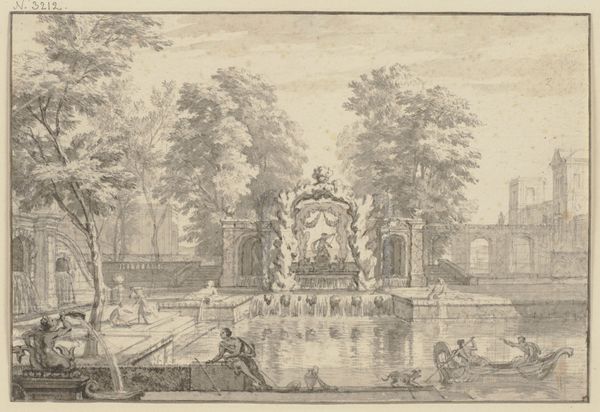
Toegangspoort tot het landgoed van Huis ter Nieuburch te Rijswijk 1697
0:00
0:00
pieterschenk
Rijksmuseum
print, engraving
#
baroque
# print
#
landscape
#
cityscape
#
engraving
Dimensions: height 162 mm, width 198 mm
Copyright: Rijks Museum: Open Domain
Editor: This is "Toegangspoort tot het landgoed van Huis ter Nieuburch te Rijswijk," or "Entrance Gate to the Estate of Huis ter Nieuburch in Rijswijk," a print by Pieter Schenk from 1697, currently housed in the Rijksmuseum. It feels very staged, almost theatrical in its presentation of the landscape. What compositional elements stand out to you? Curator: The dominating element is certainly the gate itself. Its rigid verticality, delineated by meticulously engraved parallel lines, presents a stark contrast to the organic forms of the surrounding foliage. Note the calculated recession into space: Schenk utilizes linear perspective with precision, drawing our eye through the gate and into the depicted estate. This perspectival clarity reinforces a sense of controlled space. Editor: I see what you mean about the calculated space. But I'm wondering why so much detail is spent on the trees if the gate is the most important element. Curator: Observe how Schenk articulates the arboreal masses. Each tree is rendered with a similar degree of texture, built up by layering tiny parallel lines to describe depth. They aren't unique objects as much as components that frame the entrance in much the same way a theatre has curtains framing the action. What purpose is served with the horse carriage occupying a space slightly offset from center, counter to the linear perspective? Editor: I guess that creates a sense of dynamism against the stillness of the garden architecture? The detail in the foliage and architecture definitely reinforces your point. Curator: Precisely. Consider also how Schenk uses color – or rather, the suggestion of color through hatching and cross-hatching – to distinguish between the gate’s ornamentation and the surrounding verdant environment. This print privileges structured artifice over the wilder landscape, an important component in formal gardens of the baroque style. Editor: Thanks, seeing those contrasts helps bring together the main compositional concerns of the piece for me. Curator: Indeed. This engraving exemplifies how close observation reveals an artist’s deliberate choices regarding structure and form. The formal components highlight an ideology present within 17th-century Dutch society and art.
Comments
No comments
Be the first to comment and join the conversation on the ultimate creative platform.
